http://www.nilesstar.com/2011/09/26/rattlers-in-niles/
 |
| Niles Daily Star Photo/Katie Rohman |
Hognose snakes are often confused for massasauga rattlesnakes as they can have similar size and patterns. Although this picture hides the best characteristics with a blurry head and a wood chip over the tail, it is clearly a hognose snake. Massasaugas are typically very young at this size, and have an overall thinner body. The have a well defined neck that tapers down after the head, unlike the "neckless" hognose. Young massasauagas also typically have much more black/white/grey coloration at this age with stark contrast. The tans and creams of this snake would not be seen in massasaugas. If you look closely at the blurry head, you can make out the blunt, short head and upturned nose of a hognose snake. Hognoses are toad specialists and live in sandy environments where they can dig around for their prety.
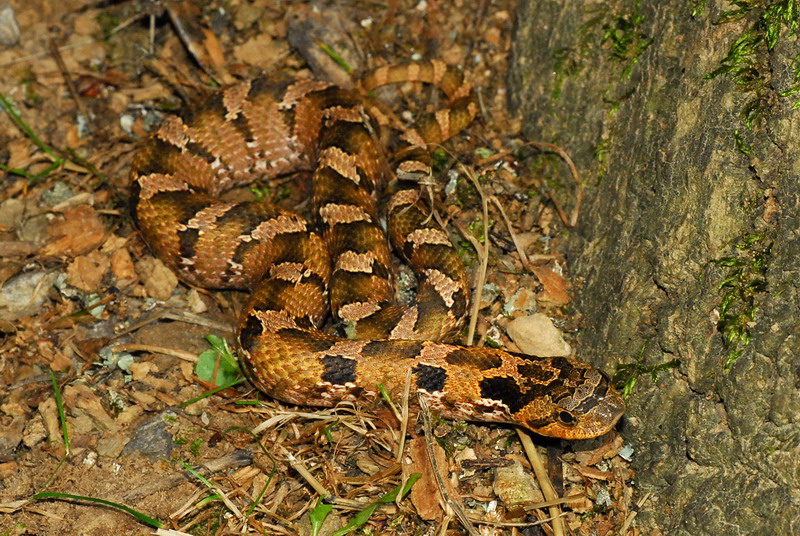 |
| This midsized hognose from a few years ago looks similar to the snake from Niles. |
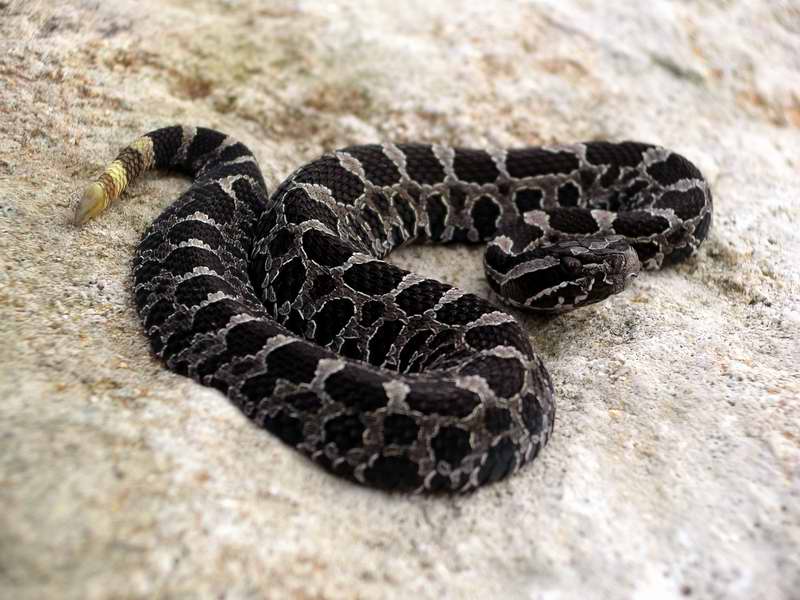 |
| This is a young eastern massasuaga rattlesnake - note the yellow tail, one segment button of the rattle, contrasting tones and narrow neck. |
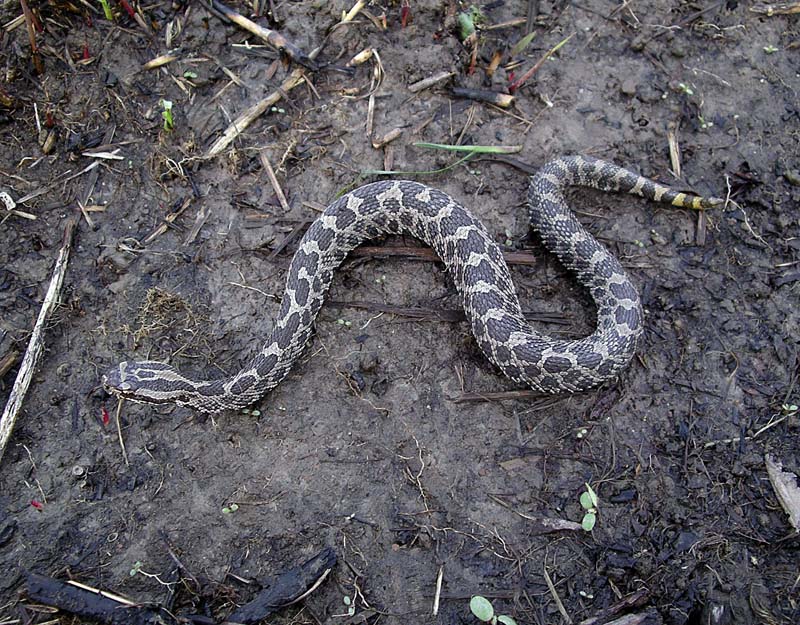 |
| This is a young eastern massasuaga rattlesnake - note the yellow tail, one segment button of the rattle, contrasting tones and narrow neck. |
Hognose snakes are completely not harmless to humans and will sometimes even put on a great display of "playing dead", rolling on their backs, and laying still with their tongues hanging out.
They will often flatten their heads out, hiss and strike with a closed mouth. This garners a few other common names from locals such as, "puff adder", "spreading adder", "hissing adder" and "cobras".
Either way, the snake is really cool. I commend Ms. Bowles for cherishing Michigan's wildlife and dealing with it in a responsible way. She has helped raised awareness of two of Michigan's periled snakes! These animals can be hard to tell apart, and whenever in doubt if the snake is venomous, it is best to err on the side of caution and keep a safe distance. For more information on telling apart Michigan's venomous and nonvenomous snakes, please visit - Michigan Snake Identification - Venomous or Not?
Rattlers in Niles? | The Niles Star
Published 10:28pm Monday, September 26, 2011A rural Niles resident has captured an unusual but once common native to Michigan wetlands.
Marjorie Bowles, of 925 Anderson Rd., found an Eastern massasauga rattlesnake Wednesday in a side yard during an excavation project. A worker helped Bowles move the snake — just a baby at shorter than a foot long — into a large plastic tub with water in it. She then contacted the Michigan Department of Natural Resources.
“It’s not dangerous, (but) you don’t want to play with it,” Bowles said.
Bowles, who lives with her husband John near a swampy area by Pine Lake, off M-60, said she has only seen garter snakes on her property, and had to research what kind of snake it was.
“This is a new one by me,” she said.
Bowles said she was concerned someone would kill the snake, and wants the public aware of the species and its declining population. She said she hopes to release the snake back into its habitat, but was awaiting a call back from the DNR at press time.
According to the DNR, massasaugas are classified as “of special concern,” are protected by the State of Michigan and are a candidate for federal listing. They live in the entire Lower Peninsula, and were once common but their populations are declining due to the loss of wetland habitat and human harassment.
Massasaugas are slow-moving, but may bite if threatened, and can grow to 18 to 30 inches long. They have thick bodies with gray, grayish-brown or brown coloring. The young snakes have yellow buttons, or “rattles,” at the tip of their tails. The adult rattles are grayish yellow and resemble corn kernels.
If bitten by a massasauga, the DNR advises seeking medical attention immediately. The snakes are venomous, but possess the least toxic venom of any rattlesnake in the U.S.
If a massasauga is spotted, the DNR recommends not picking it up, using caution and submitting the sighting to www.dnr.state.mi.us/wildlife/pubs/massasauga_obsreport.asp.
Marjorie Bowles, of 925 Anderson Rd., found an Eastern massasauga rattlesnake Wednesday in a side yard during an excavation project. A worker helped Bowles move the snake — just a baby at shorter than a foot long — into a large plastic tub with water in it. She then contacted the Michigan Department of Natural Resources.
“It’s not dangerous, (but) you don’t want to play with it,” Bowles said.
Bowles, who lives with her husband John near a swampy area by Pine Lake, off M-60, said she has only seen garter snakes on her property, and had to research what kind of snake it was.
“This is a new one by me,” she said.
Bowles said she was concerned someone would kill the snake, and wants the public aware of the species and its declining population. She said she hopes to release the snake back into its habitat, but was awaiting a call back from the DNR at press time.
According to the DNR, massasaugas are classified as “of special concern,” are protected by the State of Michigan and are a candidate for federal listing. They live in the entire Lower Peninsula, and were once common but their populations are declining due to the loss of wetland habitat and human harassment.
Massasaugas are slow-moving, but may bite if threatened, and can grow to 18 to 30 inches long. They have thick bodies with gray, grayish-brown or brown coloring. The young snakes have yellow buttons, or “rattles,” at the tip of their tails. The adult rattles are grayish yellow and resemble corn kernels.
If bitten by a massasauga, the DNR advises seeking medical attention immediately. The snakes are venomous, but possess the least toxic venom of any rattlesnake in the U.S.
If a massasauga is spotted, the DNR recommends not picking it up, using caution and submitting the sighting to www.dnr.state.mi.us/wildlife/pubs/massasauga_obsreport.asp.

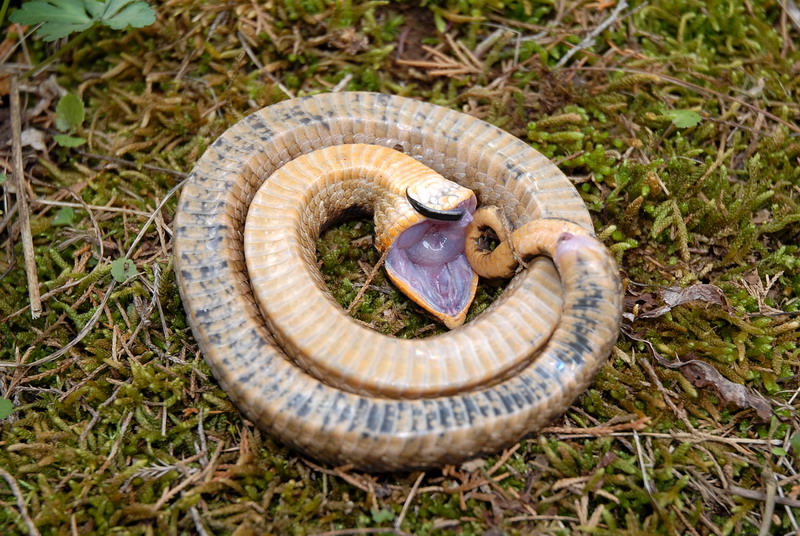
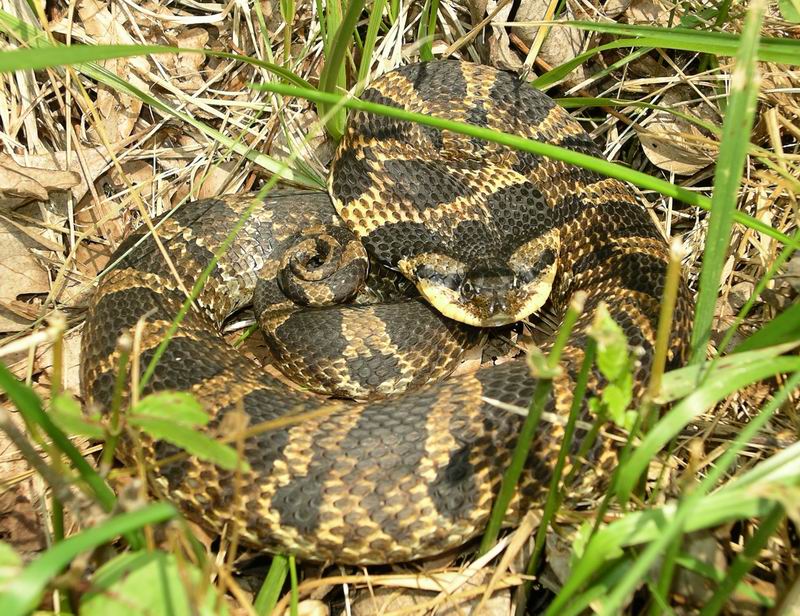

Saw this article the other day as well. It seems like there's a few articles every year just like this one. I still don't understand how the general public misses the most basic characteristic of a rattlesnake, the rattle.
ReplyDelete"Did it have a rattle?"
"I'm not sure, but it was definitely a rattler."
But it was covered by a woodchip!
ReplyDeleteRattle snakes can be considered one of the world most beautiful and dangerous creatures of the reptile family. Few decades before they are very common in the parts of Nevada but due development of human colonies every where they become limited to the woods and deserts.
ReplyDeleteRattlesnake bites